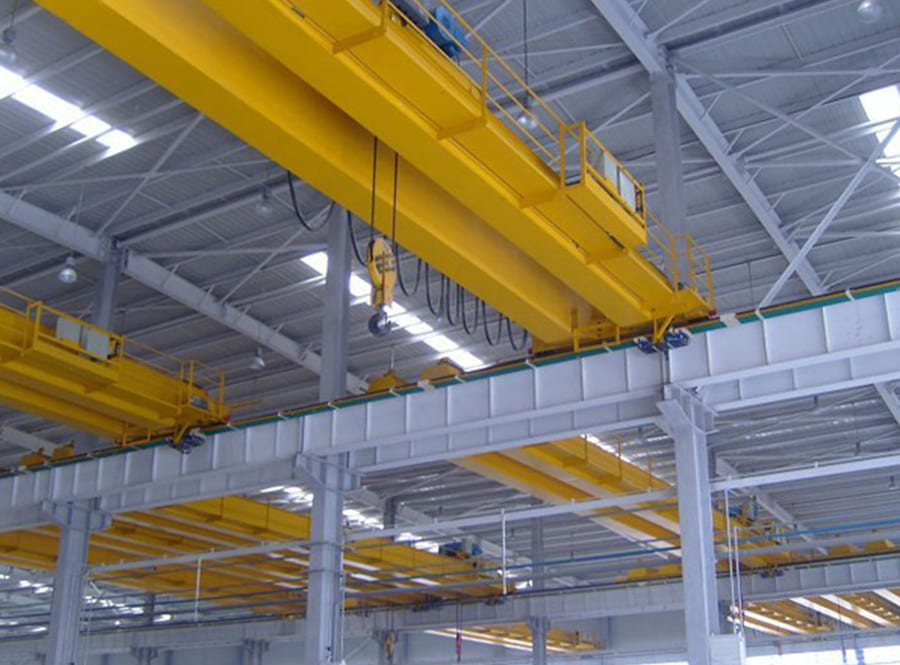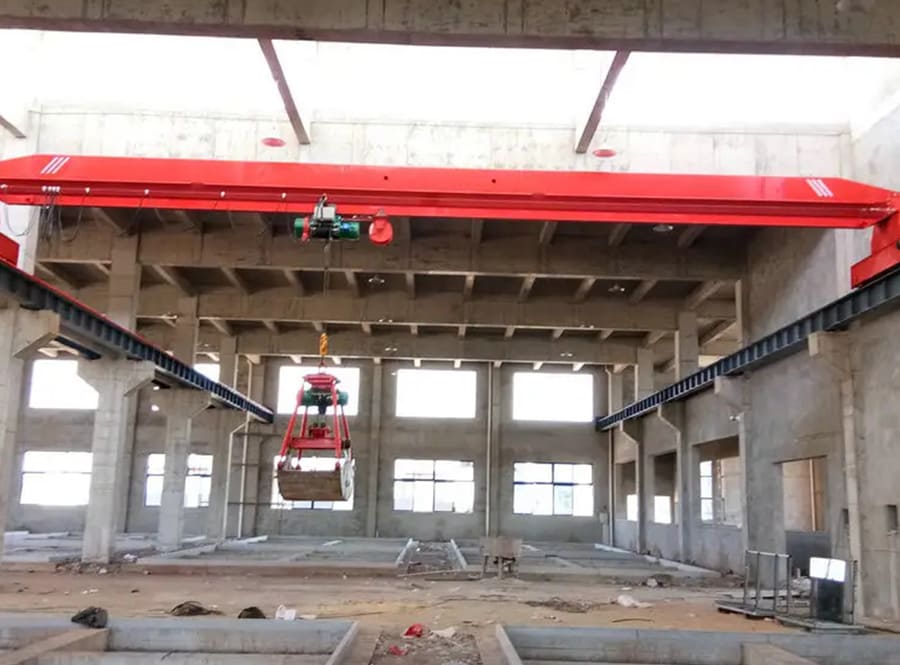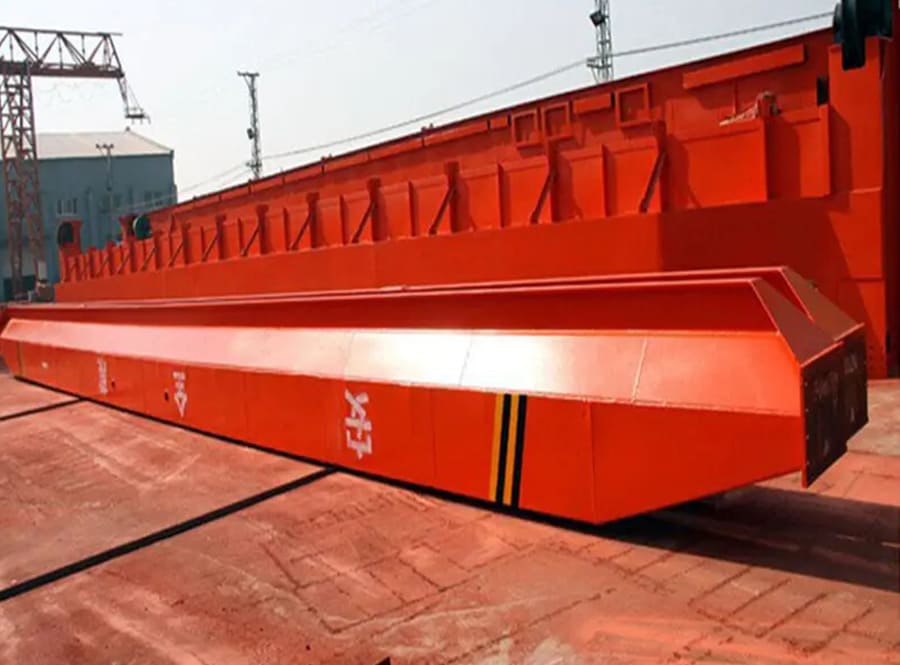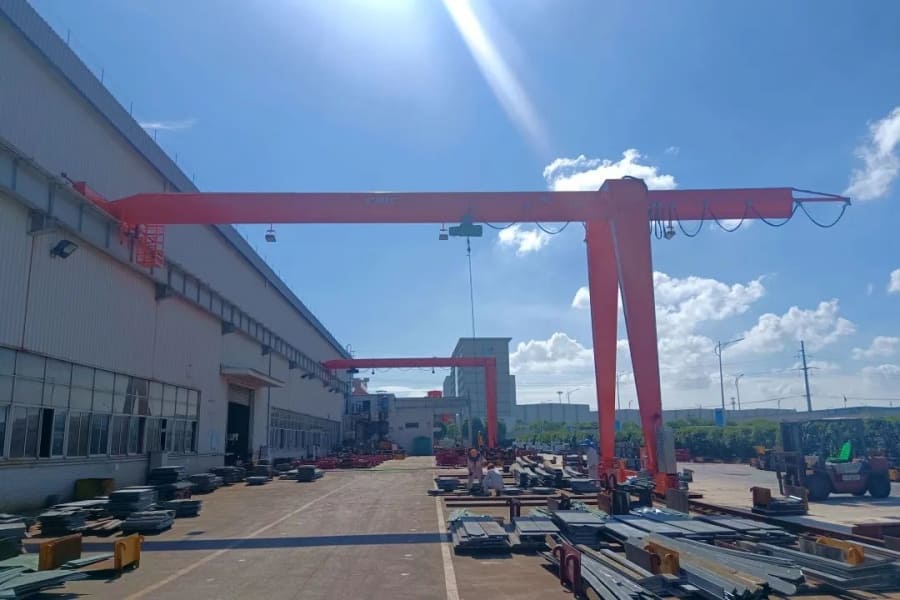Industrial overhead cranes play a crucial role in material handling operations across a wide range of industries. These robust and versatile machines are designed to lift and transport heavy loads with precision and efficiency. In this article, we will explore the features, benefits, and applications of industrial overhead cranes, highlighting their contribution to enhancing productivity and safety in industrial settings.

- Design and Components:
Industrial overhead cranes, also known as bridge cranes or overhead traveling cranes, consist of a bridge that spans the width of the facility, supported by end trucks on either side. The bridge is equipped with a hoist mechanism that travels along the bridge, allowing for vertical lifting and horizontal movement of loads. The cranes are typically operated using pendant controls or remote controls for precise positioning. - Heavy Load Capacity:
One of the primary advantages of industrial overhead cranes is their ability to handle heavy loads. These cranes are engineered to lift and transport loads ranging from a few tons to several hundred tons, depending on their specific design and configuration. Industrial overhead cranes are commonly used in industries such as manufacturing, construction, steel, automotive, and logistics, where heavy lifting requirements are prevalent. - Increased Floor Space:
Industrial overhead cranes are installed overhead, which means they utilize the vertical space in a facility, freeing up valuable floor space. This allows for efficient use of the available workspace, enabling other operations and equipment to be set up on the ground, optimizing the overall layout and maximizing productivity. - Precise and Controlled Movement:
Industrial overhead cranes offer precise and controlled movement, allowing operators to position loads with accuracy. The cranes can be operated at various speeds, and some models feature advanced control systems that enable smooth acceleration, deceleration, and fine-tuned positioning. This level of control enhances productivity, reduces the risk of damage to materials, and ensures safe and efficient material handling operations. - Versatility and Customization:
Industrial overhead cranes can be customized to meet specific lifting requirements. They can be tailored in terms of span, lifting capacity, lifting height, and additional features such as specialized lifting attachments or automation capabilities. This versatility allows businesses to optimize the crane system to match their unique operational needs, enhancing productivity and adaptability. - Improved Safety:
Safety is a paramount concern in industrial environments, and industrial overhead cranes are designed with safety features to minimize risks. These features may include overload protection, collision avoidance systems, emergency stop buttons, and safety devices to prevent the crane from operating outside its designated area. Additionally, with proper training and adherence to safety protocols, operators can ensure safe and secure material handling operations. - Applications:
Industrial overhead cranes find applications across a wide range of industries and tasks. They are commonly used in manufacturing facilities for lifting and moving heavy machinery, components, and raw materials. In construction sites, overhead cranes are utilized for lifting and placing construction materials and equipment. Industries such as logistics and warehousing rely on overhead cranes for efficient loading and unloading of goods. - Maintenance and Durability:
Industrial overhead cranes are built to withstand heavy workloads and rigorous industrial environments. Regular maintenance, including lubrication and inspections, is essential to ensure their optimal performance and longevity. With proper care and maintenance, industrial overhead cranes can provide years of reliable service.

Konklusjon:
Industrial overhead cranes are essential tools for efficient and safe material handling in industrial settings. With their heavy load capacity, precise control, versatility, and safety features, these cranes contribute to enhancing productivity and streamlining operations in industries ranging from manufacturing to construction. By investing in industrial overhead cranes and providing proper training and maintenance, businesses can optimize their material handling processes, improve safety, and achieve greater operational efficiency.





















